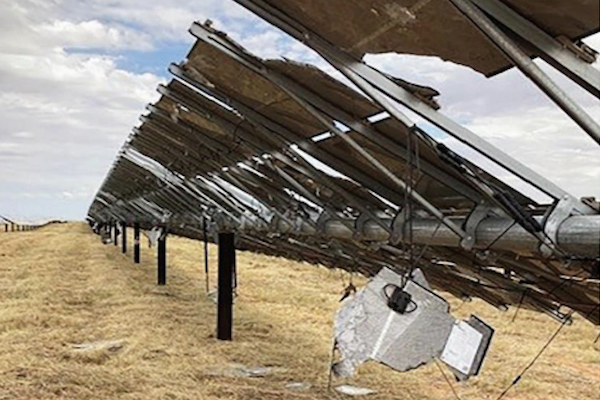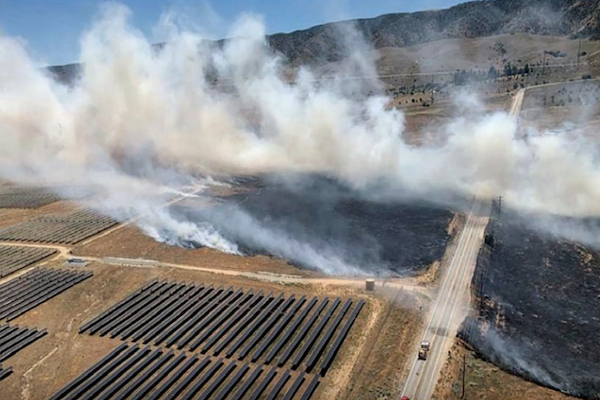We All Need to Become “Weather Wise”
Throughout college, and while working toward a meteorology and climatology degree, one of my favorite magazines was called “Weatherwise”. The magazine is published by the American Meteorological Society, and includes this quote from Benjamin Franklin: “Some people are weatherwise, but most are otherwise.” One reason I enjoyed the magazine was it was low on the technical details and research, and focused more on extreme weather, climatology, and general, good to know, weather knowledge. To this day, nearly 40 years later, it is still one of my favorites.
Would you consider yourself weather wise? If you are reading North American Clean Energy, you’re involved in the renewable energy industry. This is an industry that is driven and created by the air that can cools us on a hot summer day, the sun that softens the bite of a cold January morning, and the river that provides a relaxing boat ride behind a hydro dam. It’s also an industry that feels the wrath of the new normal in weather and climate extremes. A weather season no longer passes without us hearing of record setting events from hurricanes, severe weather, and high winds, once in a lifetime floods, and all-time record snowfall (as seen in California this winter).
Your assets and your staff have to co-exist with this new normal, one which is likely not going to change and, hopefully, will not worsen. Let’s take a look at some of the most troublesome weather extremes, how they impact the industry, and what you can do about them.

Hail Damage
A forecast of hail will quickly grab the attention of anyone involved in the solar industry. It should not surprise you that recent papers document how annual large hail environment days are increasing. The most statistically significant areas are in the Plains, and then east through the Midwest and Ohio Valley. In other words, geographic areas where much of the new, utility scale solar is being built. The same studies show that verified large hail reports have been trending upward since the early 1980s.
What does this mean to your solar operations? What can you do to mitigate this risk? Operational forecast techniques, and data to identify these events, has improved dramatically in the last decade. The storm environment that produces large, damaging hail can now be identified accurately 24 hours ahead of time. Weather models will fine tune location and timing up to 8 hours before the storms develop, giving you ample time for preparation and communication on the threat across your company. A potential plan to stow solar panels before an event can be formulated; when the storms begin to develop to where they pose a threat to your assets, impact alerts and warnings are available. These notifications predict the storm path, and impact arrival time to your site, giving you enough time to get panels into a defensive position.
Severe Weather
Nothing is more important to a business than the safety of its employees. Many renewable energy employees spend the majority of their time working outside in the elements — sometimes performing work that requires extreme safety, even without mixing in volatile weather. This past fall and winter alone, this country has endured severe storms and tornadoes in the state of Iowa, thunderstorms that race across the southern plains at 80 mph, and lightning as far north as southern Ontario. The message: There is no off season for severe weather anymore.
Lightning no longer goes into hibernation across much of North American from November to early March. While the frequency of these events may decrease, you now need to be on guard for extreme weather year-round. Continuous training for new hires on weather policy and standards should continue throughout winter, including a review and further training with staff on commercial weather solutions you may employ. Address gaps in your “weather tools” now, and make sure standard procedures are in place for the busy spring and summer storm season. The weather tools and methods you employed may have been good enough 10 years ago, but today’s environment demands a commercial, business grade solution for safety and extreme weather mitigation. The expense is minor, when considering the safety of your employees and protection of your assets.

Wildfires
Drought conditions are linked to wildfires. Prolonged drought or fast developing flash droughts are precisely the events that contribute to extreme wildfires. The heat experienced today is more extreme that it used to be; just ask anyone who’s been living in Seattle or Portland all their life. Forests, brush, grass fields, etc., become tinder dry in a much shorter time. Wildfires whipped by unseasonably strong winds race across not only forest and grassland, but urban areas (i.e., the Marshall Fire that raced through Boulder Colorado on December 30th, 2021). Commercial weather solutions that identify fire danger areas before the fire starts are essential. Should a wildfire threat to your assets exist, these solutions also track and identify all current wildfires, providing continuous updates and alerts to your staff and control centers. This will allow you ample time to evacuate staff safely, and take any mitigative action you can to lesson the impact on the asset.
Get Weather Wise
It’s time to raise your level of weather awareness and preparation. As a meteorologist who’s been at this since the late ‘80s, I can tell you that there are far fewer weather surprises now. What may be perceived as a surprise is more likely to be a lack of awareness and preparation. The term “vigilant” is heard more regularly these days, but not often associated with extreme weather. I recommend incorporating that term into your weather planning and preparedness. In other words, become weather wise.
Marty McKewon is Director of Business Development at Indji Systems, which makes and sells mapping software to help businesses make better decisions, and run more efficiently.
Indji | www.indji.com
Author: Marty McKewon
Volume: 2023 May/June









